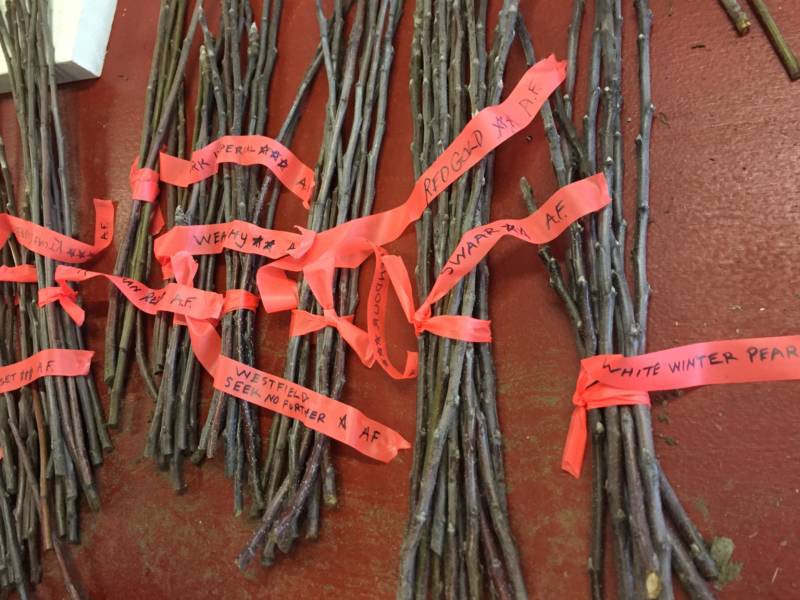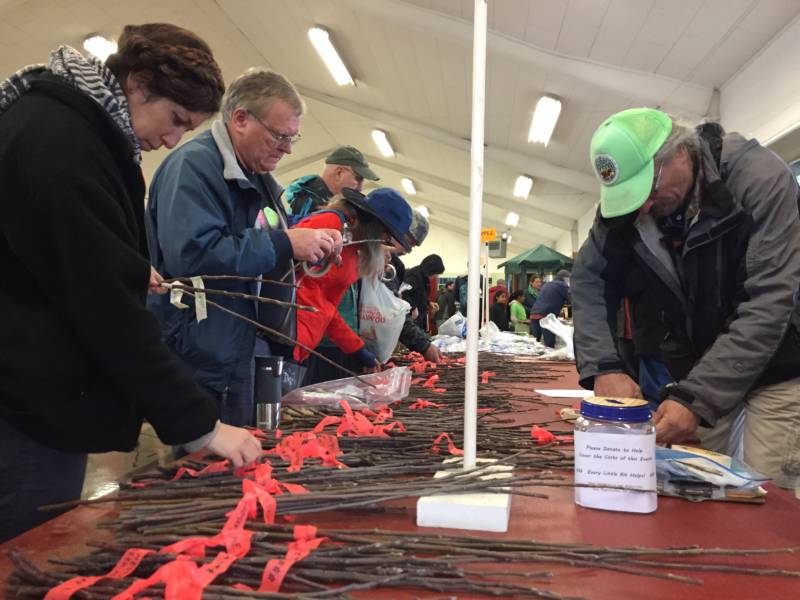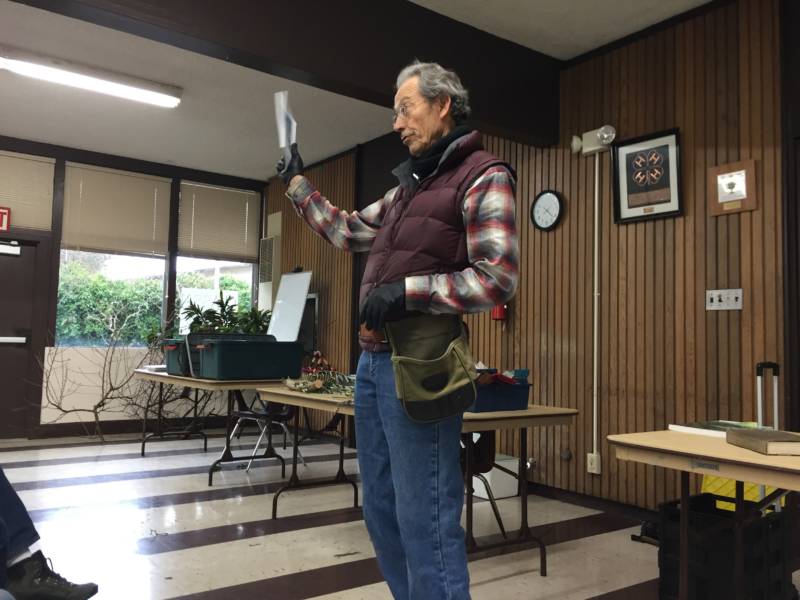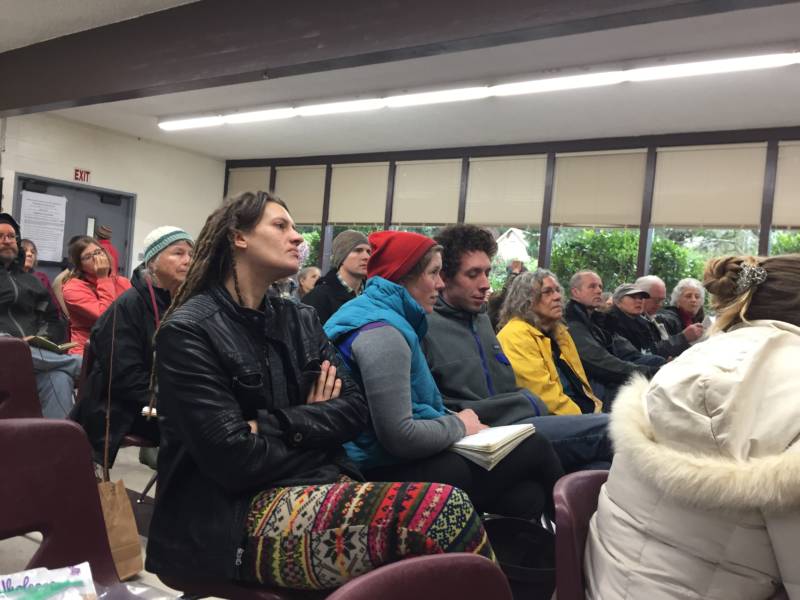On Saturday, hundreds gathered at the Mendocino County Fairgrounds in Boonville — a small town in the Anderson Valley wine-growing region — to learn farming and gardening techniques from experts at the 36th Annual Winter Abundance Workshop.
The event, hosted by Mendocino Permaculture, offered free classes in tree and vine propagation and grafting, and a scion and seed exchange, where people could freely access and trade seeds and cuttings from all over the county.
A scion is a young shoot or twig of a plant that is pruned off of one tree to graft or root onto another.
“We definitely tend to have, I would say, a reverence for farming and an appreciation of backyard gardens and growing your own. I don’t know if that grow-your-own culture is as prominent in other places,” said Holly Madrigal, who held a bag of scions and seeds, including one labeled “Fort Bragg Jalapeño Plums.”

Madrigal is the publisher and managing editor of Word of Mouth magazine, which launched in 2016 to share the stories and products that make Mendocino County unique.


